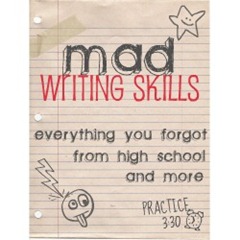Blogging can be such a solitary hobby that we writers forget that we are only half of the equation. As soon as you hit that “Publish” button, your words enter the public domain to be read and interpreted by anyone with Internet access. Kinda scary and exhilarating at the same time, isn’t it?!
To make sure your posts don’t figuratively (or literally) get lost in translation, you should take some time to analyze your readership and adjust your writing to suit your audience. I have created a few questions to help you take a closer look at your audience.
Ask yourself a few questions about your readers. If you have no idea what the answers to these questions are, consider creating a “Getting to Know You” poll. If you use Blogger, creating a poll is very easy.
PRACTICAL TIPS FOR GETTING TO KNOW YOUR AUDIENCE
1. Read through all your old comments and emails from readers. This is especially important if you do not use comment moderation, since there may be some comments you never read.
2. Pay attention to the Negative Nellies. It’s never fun to listen to the bad things people have to say about us, but negative criticism offers a chance to improve. Is there a grain of truth in that hurtful comment? Turn it into an opportunity to better your blog. Success is the best revenge. 
3. Track your readers’ comments back to their blogs. The single easiest way to find out more about your readers is to read their blogs!
4. Research your top referrers. Your top referrers can be found by checking out your Google Analytics or by burning your feed. Peruse the sites of your top referrers and determine their content, voice, etc. for characteristics your audience may like.
EDIT: If you are unfamiliar with Blog Analytics, this article will explain how to set up Google Analytics and explain what the data means about your readership. Just be aware that the analytics must run on your blog for awhile to give you accurate feedback.
5. Install a traffic feed widget on your blog. This tells you the geographic location of the people who visit your blog which can have a practical impact on your content. For example, if you are getting quite a bit of foreign blog traffic, you may have to watch how often you use certain English idioms that ESL readers might not understand.











Hello,Thanks for the article, there is something I don't understand though – "checking out your Google Analytics or by burning your feed." Can you explain what this means??
Thanks for the comment, Wendy! I added an edit to the post that will take you to an article that might be helpful.